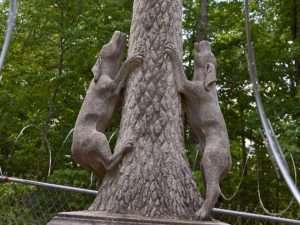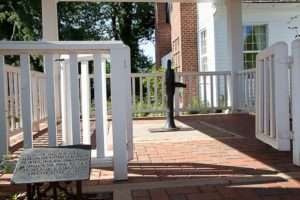For over 8,000 years, this timeworn path has felt the tread of travelers. Buffalo and other wildlife were first to wind their way through the wilderness. Later, American Indians, traders, trappers and missionaries joined their fellow creatures on the rough track. In the late 1700s and early 1800s, boatmen floated merchandise downriver to New Orleans where they sold their flatboats and their goods and returned home on foot or horseback, using the well-worn Natchez Trace. Back then the Trace went through rough territory dominated by many hazards, such as bandits, American Indians and wild animals. All these hazards earned the route the ominous nickname, “Devil’s Backbone.” Cautious travelers of the old Trace made sure to acquire safety in numbers by accompanying postal workers on their regular routes. Because of their influence on traveling the Trace, postal workers were later chosen as the official symbol of the Parkway.
Today’s visitors will not need this historic safety measure to enjoy the Trace’s rich wildlife and scenery. Crimson clover, butterweed, Japanese honeysuckle and ground ivy are just a few of about 100 species of wildflowers to be found along the Parkway at different times of the year. There are also numerous hiking trails, exhibits, picnic sites, campgrounds, and water recreation areas. On either side of the Parkway lie communities with wonderful places to stay, excellent places to dine and plenty to see and do.
Hiking on the Parkway presents both challenges and rewards. With over 60 miles of National Scenic Trail and 28 different hiking and self-guiding trails, there is something for every kind of traveler to experience. Be sure to bring your camera along; beautiful scenery will greet you no matter what time of the year you choose to visit!





